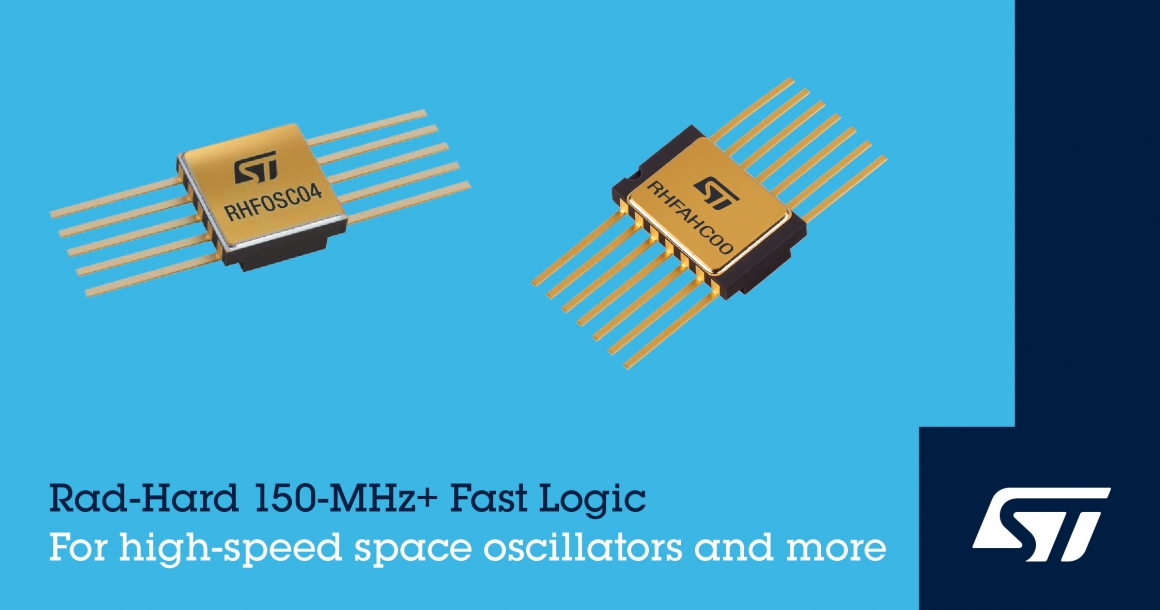Subscribe to EDOM TECH Newsletter
STMicroelectronics
2020/09/25
STMicroelectronics Accelerates Space Applications with 150MHz+ High-Speed Rad-Hard Logic

STMicroelectronics has introduced the first two logic devices in a new high-speed, radiation-hardened family that brings 150MHz+ performance to space applications.
The QML-V qualified RHFOSC04 (SMD15962F20207) integrated oscillator driver/divider and RHFAHC00 (SMD 5962F18202) quad NAND gate have more than twice the gate speed of typical rad-hard logic ICs to ensure faster response in high-frequency circuits.
Designed with ST’s proprietary 130nm CMOS technology already proven throughout the space industry, the new devices combine their speed advantage with low operating current and a best-in-class radiation hardness with an RHA (Radiation Hardness Assurance) qualified TID2 at 300 krad (Si) and immunity to SEL and SET3 up to 125 MeV.cm2/mg.
Their supply-voltage range of 1.8V-3.6V helps meet the tight power and energy restrictions typical on-board satellites and space vehicles.
The RHFOSC04 combines the roles of multiple discrete logic components to drive a crystal oscillator directly, which simplifies circuit design and enhances stability while saving board space and increasing system reliability. The divider adds flexibility by providing nominal-frequency, divide-by-2, divide-by-4, and divide-by-8 outputs.
The devices are available as bare die ready for System-in-Package (SiP) integration in customers’ applications or packaged as ceramic hermetic Flat 14 (RHFAHC00) and Flat 10 (RHFOSC04) devices. Please contact your ST sales office for pricing options and sample requests.
For further information please visit www.st.com/fastlogic-pr (Source: STMicroelectronics website)
1 SMD: Standard Microcircuit Drawing number, issued by the QML-V qualifying authority and usually the default component reference used within the space industry.
2 TID: Total Ionizing Dose
3 SEL and SET free at 125 MeV.cm2/mg: quantifies resistance to heavy-ions-induced Single Event Latchup and Single Event Transient faults






